Operating in a cloud-based environment requires thorough security and protection measures to protect applications from security-related issues. That’s why there is a greater need for a SaaS Application security checklist. The SaaS application security checklist refers to frameworks that help secure data and applications running in cloud-based environments. With the advancement of technology, the development sector is focusing on cloud operations, which require stronger security. It is, therefore, essential to ensure that the desired measures are met, such as evaluating existing cloud security tools and assessing potential problems while finding solutions to curb any possibility of security breaches. It is essential to understand that the SaaS Application security checklist involves using security standards and best practices on most SaaS products. With the assurance of the checklists, businesses, and firms running their applications or products on the cloud will always feel safe about service delivery and even the best customer security standards. When developing SaaS applications, let’s delve deeper into a fundamental understanding of the common key application checklist areas.
Key areas to check for SaaS Application Security
1. Data security and threat detection
Data is the basis and fundamental element that helps run organizations, applications, and any other entity that involves data usage. Since it is an essential element, it must be ensured that it meets high-security criteria and that no possible breaches happen even soon. In the strategies to protect data, the data security and threat detection framework stands out as a proper entity to help you protect most elements revolving around data, intellectual property, and client information. With an appropriate adherence to security policies, procedures, frameworks, and techniques and the whole security checklist, you can consider your application to run safely in the cloud space.
As a significant step in ensuring the achievement of the SaaS application security checklist, it is essential to understand the threats and vulnerabilities associated with the firm you are dealing with, along with its services and applications running on the cloud. Some common security issues you may experience on the cloud include cross-site scripting attacks, data attacks, and security misconfigurations. Understanding these security issues gives the developers a leeway to ensure every element within the SaaS Application security checklist is met. Data security and threat detection lowers data loss rates and unauthorized access and ensures the security of the most sensitive information.
Key Data Security and Threat Protection elements to consider
Some of the key checklist implementations under the Data Security and Threat Detection Framework include:
-
Multifactor authentication
It is essential to ensure the implementation of multifactor authentication techniques to protect user access to personal information.
-
Data encryption
Data encryption is among the greatest strategies for ensuring data security and threat detection. Therefore, ensuring that your SaaS application is integrated with data encryption techniques to protect data at rest and in transit is essential. An application that doesn’t include the methods misses out on the checklist and is, therefore, likely to experience security loopholes.
-
Access control and privilege access
To achieve the checklist on SaaS application security, you won’t miss out on access control and privilege access. A proper SaaS application should highly enable access control and privilege access so users can log into applications at different access levels.
-
Frequent security audits and penetration testing
A SaaS application should always undergo ongoing security audits and thorough penetration tests to ensure easier detection of vulnerabilities. Thorough tests ensure exploits are curbed before execution, thus minimizing data breaches. A SaaS application without proper security audits and penetration testing might have security issues as it skips a clear security implementation among the key security checklists.
-
Reliable monitoring mechanisms
Investing in proper monitoring mechanisms is important before releasing an application to the cloud. Security monitoring is essential as it helps detect potential loopholes before they become disastrous. It provides immediate response tactics to any suspicious activities within the SaaS application. With the implementation of this crucial checklist strategy, SaaS applications will experience few to no cases of security breaches. If there are any, the issues can be handled on time, as anyone can detect suspicious attempts through notifications.
-
Security updates
Security patches and updates are essential in ensuring the security process and policies align with the latest threats. Ensuring the latest security updates on the SaaS application means the application is more secure and can thus detect any threats, even in the fast-paced technological world.
Under Data Security and Threat Detection, it is essential to focus on other key areas that ensure adherence to the security protection of SaaS applications and check for compliance. Let’s explore how this can help ensure the security of a SaaS application.
2. Compliance of SaaS Application Security
In this context, organizations must adhere to regulatory compliance mechanisms while developing applications, especially SaaS applications. Compliance with key strategies and mechanisms also helps boost SaaS application security. The rules and regulations instituted in the compliance mechanisms ensure proper security in handling sensitive client information, thus reducing security risk. Meeting the compliance standards means there are no risks of legal problems, reputational damage, or even fine impositions. An organization that meets compliance standards gains much trust from clients and other stakeholders.
Some essential compliance standards that SaaS applications should strive to meet include ISO 27000, which involves information security. SOC, another compliance standard, ensures consumer data integrity and security of the SaaS application, among other technological entities.
Therefore, on compliance, developers should asses some key areas as a key strategy in meeting the SaaS application checklist regarding security.
Compliance of SaaS Application Security –Key Considerations
Some of the critical considerations to consider include:
-
Continuous compliance checks
It is essential to check and ensure that the SaaS application undergoes frequent audits and evaluations to ensure the SaaS application undergoes frequent compliance checks. An application that undergoes frequent compliance checks has a higher security capability. SaaS applications that do not undergo frequent compliance checks are likely to be vulnerable security-wise.
Other key areas to check for compliance include compliance with the General Data Protection, using NIST 800-53 Risk Management Framework to ensure examination of potential IT Risks within the SaaS application, among others. Also, other key compliance standards, such as Systems and Organization Controls, must be implemented to ensure confidentiality, availability, and integrity.
How to check if a SaaS Application meets the Compliance standards
In your journey to ensure the SaaS application meets the Security Checklist, it is important to ensure a proper check on the compliance standards. However, you need to ensure several approaches and dimensions when checking the achievement of compliance standards. The following are some of the key guidelines:
-
Explore the applicability
Not all standards apply everywhere; thus, there is a need to assess the standards aligning with SaaS applications. Therefore, you must conduct extensive research to ensure that a specific compliance standard meets a particular sector. For instance, a company handling sensitive data and transactions needs to ensure the implementation of compliance standards such as PCI DSS or GDPR.
-
Understand client requirements
It is important to always understand what the client wants, especially from the security perspective. You must engage your client to properly understand the key security areas that must be implemented in the application.
Other considerations to focus on when checking if the SaaS application meets the compliance standards include:
- Reviewing the legal obligations.
- Conducting a cost-benefit analysis.
- Exploring voluntary compliance.
- Attaining transparency and communication.
3. Vendor Evaluation
In assessing the SaaS Application Security Checklist, you will perform thorough assessments of SaaS Vendors to ensure the products they provide have a higher level of security. Key service metrics, such as customer support, response time, and uptime, are also essential. Feature assessment is also necessary because some features establish an application’s security level. Some key areas to check for include security integrations and reporting capabilities.
Thus, evaluating vendors requires incessantly assessing key security reporting features, security integrations’ response time, how it’s entirely monitored, and much more.
Key steps in evaluating SaaS Vendor – SaaS Application Security
Assessing and evaluating a SaaS Vendor is among the major undertakings in ensuring SaaS application security. Some of the key steps to help you assess and evaluate a SaaS Vendor include:
-
Assessment of vendor privacy and security features
Your SaaS vendor should always have firm security and privacy policies to be sure that the products they provide are up to standard and meet the data policies and security measures. By assessing vendor privacy and security policies, you will understand how they handle customer or consumer data, including data retention and sharing.
It is also important to explore and understand how the vendors control security and access to management features. Doing so will always give you insight into how they handle security issues and thus give you confidence that a SaaS application is secure and effective.
-
Security certifications
Vendors who value the security of SaaS products will usually achieve the necessary security certifications. Thus, it is essential to browse through SaaS product vendor profiles and ensure they have all the required security certifications. Vendors with legitimate security certifications often meet industrial security standards and thus are good enough to provide better and more secure products.
-
Security infrastructure and redundancy
It is also essential to assess the vendor’s security infrastructure. The key infrastructure to check includes network architecture, uptime assurances, backup, and disaster recovery plans. You should also check whether the vendor employs industry-related security procedures and technologies.
The SaaS Vendor checklist to ensure SaaS Application security entails assessing and analyzing the IT infrastructure. Let’s explore IT infrastructure under Vendor evaluation as a checklist entity for SaaS.
-
IT Infrastructure analysis
With IT infrastructure analysis, you can always invest heavily in the security of your SaaS application. This phase assures the protection of diverse technological assets, including cloud resources. Proper IT infrastructure analysis can shield your SaaS application from attacks and potential security flaws such as theft, malware, assaults, and even bots.
Key steps must be followed when assessing the security of a SaaS Application’s IT infrastructure. This includes performing consistent penetration and security testing to identify any security loopholes. It is also essential to ensure that all unused and unnecessary software and equipment have been removed from the infrastructure, ensure secure protocols and communication channels, and configure firewalls, among other things.
The process of Conducting an IT Infrastructure Analysis
IT Infrastructure analysis aims to help understand insights into assisting developers to make informed decisions. Some of the key steps in the process of conducting an IT infrastructure analysis include:
- The creation of a software and device inventory
A proper list of software programs and devices within the infrastructure is essential. During this time, you should also check for obsolete files and devices to ensure that they meet security procedures and thus provide the entire security of the SaaS application.
- Network architecture evaluation
Most security-related concerns lie in the network architecture of the IT infrastructure. It is essential to understand the approach used by SaaS providers to separate client information and applications. SaaS providers may use network segmentation to divide the two entities, thus ensuring limited control and lateral movement in cases of security breaches.
- Assessment of physical security measures
It is essential to check for the security of physical elements through access control evaluation, a thorough check on environmental control, and even surveillance systems. Assessing and ensuring data centers meet the most crucial security demands is important.
- Review customer storage and data protection measures.
You will encounter data at rest and in transit when dealing with SaaS applications. How customer data is stored affects the security of the SaaS application. Ensure the SaaS provider employs robust security techniques to store and protect client information. Ensuring data integrity and confidentiality means increased protection for the SaaS application. It is, therefore, essential to perform a thorough review and ensure that the SaaS application employs proper data storage procedures that protect personal data from unauthorized access.
- Assessment of the security monitoring capabilities
It would help if you explored the tools for detecting and reacting to security issues in time. Proper security monitoring capabilities help identify slight attacks and devise e-security mechanisms to counter such attacks. Common security issues can be monitored and detected through security information, event management systems, and intrusion detection systems, among other key systems. A better SaaS application will always have the best security monitoring mechanisms, which can easily detect and mitigate security issues even before they affect the SaaS application and consumer data.
How to Achieve SaaS Application Security Checklist
There are key strategies that will help achieve SaaS application security. You can consider cybersecurity training, which entirely involves training on online security threats. With cybersecurity training, you will gain insights into disaster response strategies, mitigating security issues, and protecting your SaaS application from cyber attacks and other attacks. It is also essential to ensure that cybersecurity policies are appropriately integrated into the SaaS application to ensure SaaS application security. It is also necessary to ensure that users and anyone running the SaaS application are properly informed about risky cybersecurity behaviors, including using unsecured public Wi-Fi. Ensure you also train the users to stick to stronger security measures and best practices, such as using stronger sign-in passwords.
Implementing cybersecurity training should involve customizing security training materials, regular cybersecurity updates, and proper data handling practices, among other things.
- Disaster Response
Disaster response is among the major cyber security approaches to responding to security issues and disasters. Proper disaster response will give you an appropriate understanding of risk management against security attacks, specifically cybersecurity attacks. Thus, you must ensure appropriate communication techniques, incident response approaches, and preventive measures, among other things. With proper disaster response strategies, your application will be stable enough in case of attacks and security crises.
When checking your SaaS application for disaster response preparedness, it is essential to examine if there is a response team to handle security disasters in cases of security threats. Other key areas include a response strategy plan and disaster response equipment. Achieving disaster response thus requires implementing redundancy and backup procedures, deployment of continuous monitoring alerts, and clear security communication and coordination protocols, among others. Therefore, when weighing an application’s capability to meet security standards, it is important to focus highly on its disaster response strategies.
Conclusion
The procedures and key areas highlighted in this piece establish a basis and foundation for a solid security posture when managing SaaS applications on the cloud. The areas cover thorough security and considerations such as threat protection, data storage measures, compliance strategies, and policies. Therefore, when checking the suitability of your SaaS application for security stability, it is important to focus on these key areas and any security procedures highlighted under them. You must ensure continued vigilance, monitoring, and security updates with SaaS applications. It is also essential to check for the suitability of a SaaS application based on its security updates and monitoring approaches to detect any suspicious, malicious security attempt. More importantly, continued training, monitoring, and consistent training of SaaS application users should be considered to secure the security layer. It is, therefore, essential to focus highly on the security of your SaaS application since security issues increase with the growth of technology, especially cloud technology. Employing the greatest security measures on your SaaS application protects it from these threats.
Finally, are you looking for IT security solutions? Get in touch with us today!
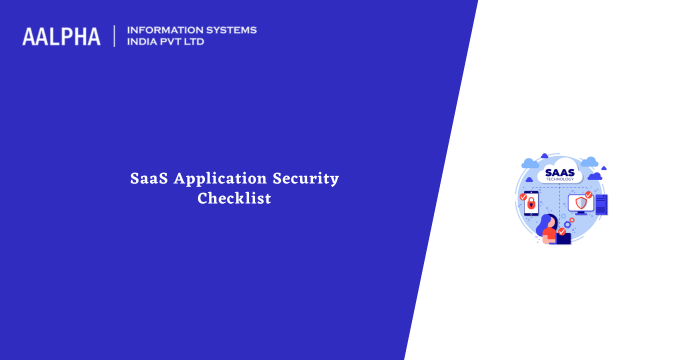

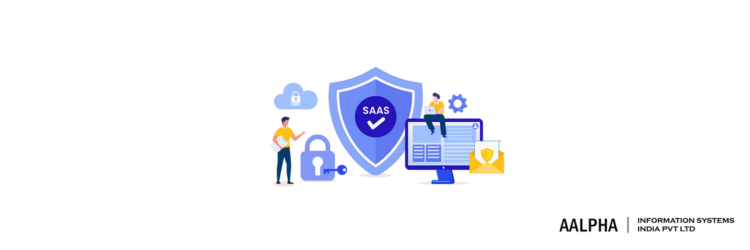
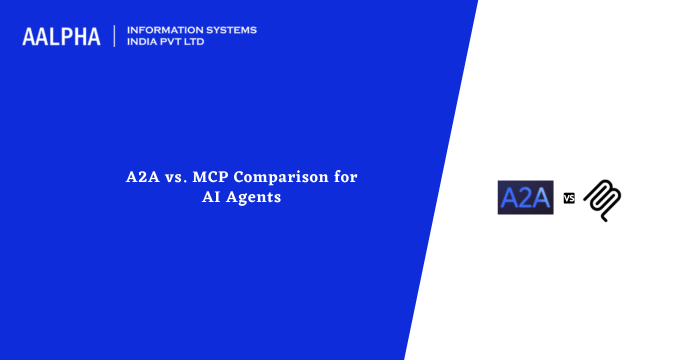
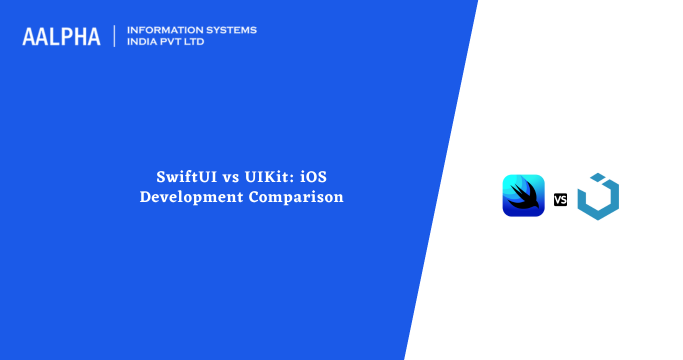
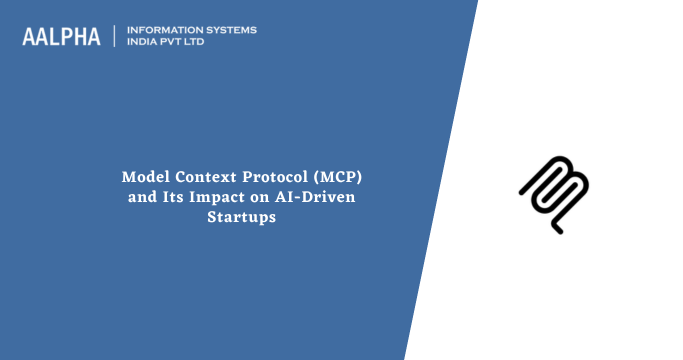
Share This Article:
Written by:
Stuti Dhruv
Stuti Dhruv is a Senior Consultant at Aalpha Information Systems, specializing in pre-sales and advising clients on the latest technology trends. With years of experience in the IT industry, she helps businesses harness the power of technology for growth and success.
Stuti Dhruv is a Senior Consultant at Aalpha Information Systems, specializing in pre-sales and advising clients on the latest technology trends. With years of experience in the IT industry, she helps businesses harness the power of technology for growth and success.